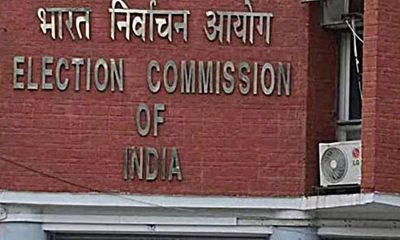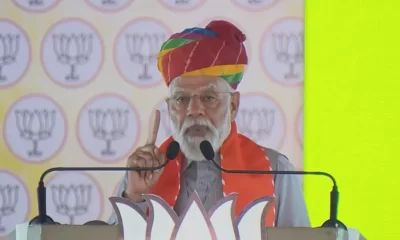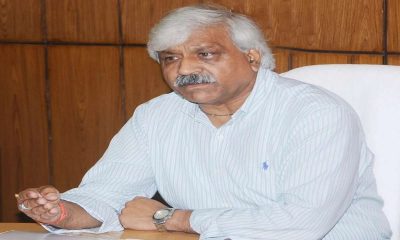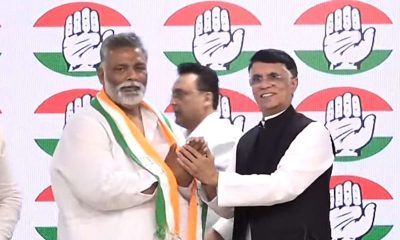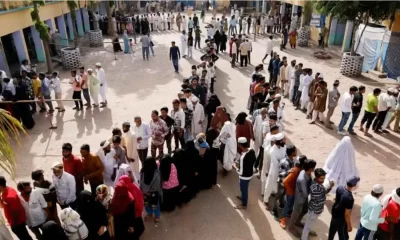Opinion & analysis
The Politics of Language
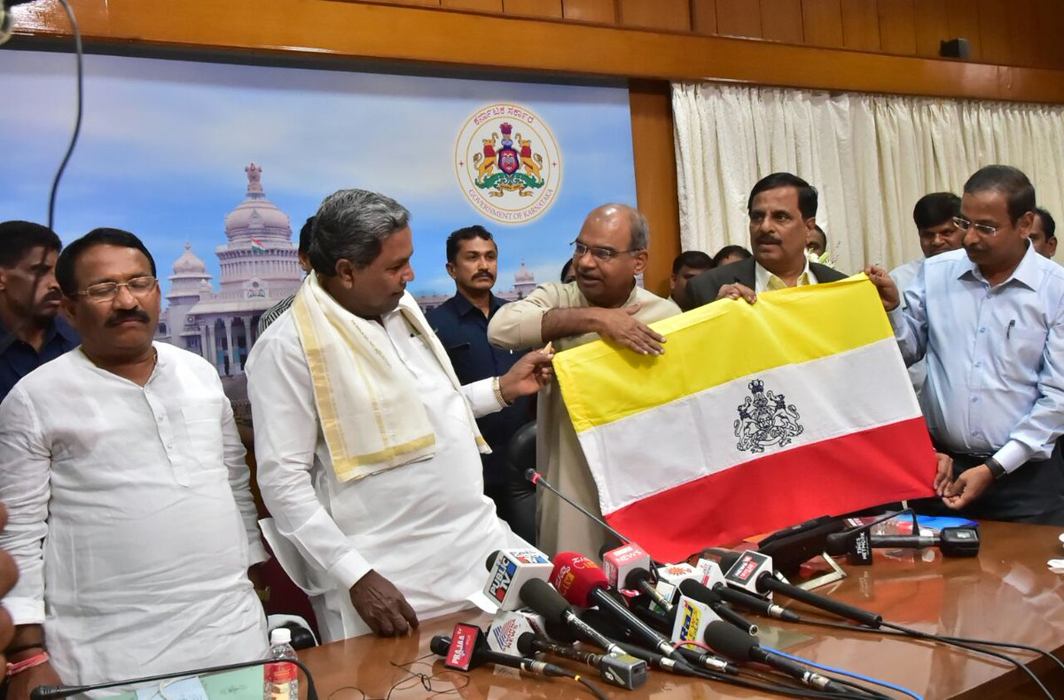
With Lok Sabha polls a few months away, enterprising Karnataka politicians are trying to create political capital by throwing their weight behind pro-Kannada causes while whipping up anti-Hindi sentiments in the state capital and elsewhere
By Stephen David in Bengaluru
IT ALL began with defacing of Hindi signs at the Bengaluru Metro, India’s third longest operational rail transit network, sometime in June 2017. Although the Metro is a joint venture of both the state and the Centre, pro-Kannada outfits with the backing of the then chief minister Siddaramaiah deemed it fit to demonstrate their anger at what they viewed as Hindi opposition in the state. The protests were not as bad as they were in Tamil Nadu a few decades ago where the local movements didn’t want any semblance of Hindi there.
Siddaramaiah, now chairman of the coordination committee, is back at his pro-Kannada loud chorus again: This time, firing on all cylinders, at the chief minister HD Kumaraswamy’s green signal for English as a medium of instruction in 1,000 government schools beginning from the coming academic year. Kumaraswamy, heading the nine-month long JDS-Congress coalition government, defends his decision to bat for English because he feels it will give an advantage to the government school students to get jobs and interact with confidence in an increasingly globalised work place environment.
With cities like Bengaluru, Mysore and Mangalore seeing a rush of companies in the information technology [IT] and information technology enabled services [ITES] sector, more job opportunities will open for those who have an English-speaking edge. More than a million workers eke out their living thanks to these companies where English is the lingua franca. And a sizeable number of them are from out of Karnataka because of the huge gap in the skill levels. Kumaraswamy wants to plug this gap by thinking global while acting local. But his detractors like Siddaramaiah are out to spoil that thinking by vehemently bringing up the Kannada card, hoping it will translate into votes for his party or create momentum for their own political careers.
Karnataka has been India’s top software exports state – more than 2,000 IT firms and nearly 50 dedicated export zones – for a number of years, being home to behemoths like Infosys, Wipro, Flipkart apart from several marquee MNCs names like IBM, Dell, GE or SAP to name a few. Almost 80 per cent of global IT majors have their India operations in Bengaluru, the fourth largest technology cluster in the world after Silicon Valley, Boston, and London.
Tech titans from NR Narayana Murthy, Aadhaar creator Nandan Nilekani, Wipro chairman Azim Premji, Ashok Soota, Desh Deshpande, Kiran Mazumdar Shaw and so on – all of them have a Karnataka connection. Bengaluru is also the site of India’s space headquarters, ISRO, headed by a Tamil-speaking aero scientist now in addition to major public-sector undertakings like aerospace major Hindustan Aeronautics Ltd, National Aerospace Labs, Indian Telephone Industries, Bharat Electronics, HMT and many more.
“Bengaluru itself is a cosmopolitan city, and we must be open to having all languages promoted here,” says one IT major senior executive who is from outside the state. “We don’t feel like outsiders here, we feel at home.” There are some fringe pro-Kannada outfits who have caused some distress to those who don’t speak the local language. This has been a major cause of pain to foreign students in certain pockets in the state.
Coming to the Bengaluru Metro Hindi signage defacing by pro-Kannada outfits, the move helped Siddaramaiah get some traction at that time. Although the Metro rail – coaches as well as the stations – displayed signs in Hindi, English and Kannada, there is no Hindi today thanks to the blitzkrieg launched by Kannada groups, online and offline. For some, Hindi was seen as an imposition. It was compared to the Centre trying to foist their language on south India. For commuters, especially from those out of the state who don’t know English or Kannada, chances are they will miss the bus – or train, for that matter.
India’s Vice President Venkaiah Naidu, whose mother tongue is Telugu, called Hindi as the national language at a function in Gujarat. “Hindi is our national language, our identity and we should be proud of it and not be obsessed with English,” he had said. While the Indian Constitution does not identify any language as ‘national’, Article 343 says that Hindi and English enjoy the status of official languages.
Whether the Centre is promoting or imposing Hindi is now in the realm of verbal gymnastics but what is sad is that Karnataka has become the battle zone for language politics.
Now with the Lok Sabha 2019 elections nearing, stoking the Kannada language issue has the potential to reap rich political rewards. Siddaramaiah made Kannada pride a poll plank. He had proposed a Karnataka state flag apart from successfully batting to black off Hindi signage at Bengaluru metro stations.
Anti-Hindi Twitter campaigns like #NammaMetroHindiBeda (‘Our Metro, We don’t want Hindi’) only added to the fervor by some people who removed Hindi words on the signboards of two Metro stations. The Kannada Development Authority [KDA], whose chief is also named Siddaramaiah, had also issued notice to the Bangalore Metro Rail Corporation Ltd (BMRCL) and sought an explanation why it was using three-language policy.This was akin to DMK acting president MK Stalin threating to launch an anti-Hindi agitation after milestones marked in Hindi were seen on Tamil Nadu highways.
KDA sought an explanation within a week from BMRCL managing director Pradeep Singh Kharola – who has moved to the Centre and become MD of Air India – citing provisions of
the Karnataka Shops and Establishments Act, Department of Personnel and Administrative Reforms (DPAR) Services, and directives of the Union Home Ministry.
KDA chairman SG Siddaramaiah termed use of Hindi in Bengaluru Metro was “unnecessary imposition of Hindi” as he argued that it was like any other state government transport corporation owned by the state Government although it was using Central funds and hence had to follow only a two-language policy – Kannada and English.
Earlier this month, while delivering the valedictory speech at the 84th Akhila Bharata Kannada Sahitya Sammelana in Dharwad – home of several Jnanpith awardees like Girish Karnad – Siddaramaiah said the opinion of the majority of Kannadigas was in favour of imparting primary education [up to class 7] in Kannada. The Congress strongman said: “English is just a language. It cannot become a medium to gain knowledge, which can be easily acquired through the mother tongue.”
Enthused by his pro-Kannada works in the past, pressure is on for Kumaraswamy to withdraw the notification issued on introducing English as the medium of instruction in 1,000 government primary schools.
Jnanapith awardee Chandrashekar Kambar even invoked the example of Thomas Babington Macaulay, on whose suggestion English had become the administrative language in British-ruled India. For Kambar, Kannada is what is required for daily business and cultural development. Some pro-Kannada groups, who protest against Tamil or Hindi films sometimes, go to ridiculous lengths to press for their demands: one group demanded former adult star Sunny Leone sing in Kannada while she was hired for a Bangalore music show.
In December 2017, Bengaluru police capitulated to the demands of pro-Kannada groups that went on a protest against adult star and Bollywood queen Sunny Leone’s New Year event in the state capital. Although it was a private event at a private venue near the Manyata tech park for a ticketed audience, the city cops decided to not accord permission. This was despite the court giving directions to the city police to maintain law and order. The Home Minister at that time conveniently passed on the buck to the police chief’s discretion while it was clear that the government of the day was in cahoots with some pro-Kannada group’s demands.
But a year later, the police deployed more than 200 personnel to guard Sunny for a similar event in the city that went off peacefully. The police threw a heavy security blanket for the performance to go without a hitch but the threat of pro-Kannada outfits throwing a spanner in the works was always there.
Although Kumaraswamy and Siddaramaiah are pitted on two sides of the language war, Kumaraswamy has refused to back down on his policy to back English in government schools from the coming academic year. “I am as pro-Kannada and pro-development,” he says, “and there is no politics here.”
Kumaraswamy’s powerful brother – public works department minister HD Revanna – came to his rescue by telling the media, “My children can study English, Kumaraswamy’s children study English, Parameshwara’s children can study English, and then why can’t poor people who cannot afford food study in English? Let the critics bring an order that all must only study in Kannada medium then I will agree with them all.”
While the primary and secondary education department is already gearing up to train its teachers from the Regional Institute of English there is no let up by political groups who are hoping to make political capital of the language wars.
Opinion & analysis
Never say never again: Nitish Kumar’s expertise at hoodwinking allies shines through!
Nitish Kumar does it again!
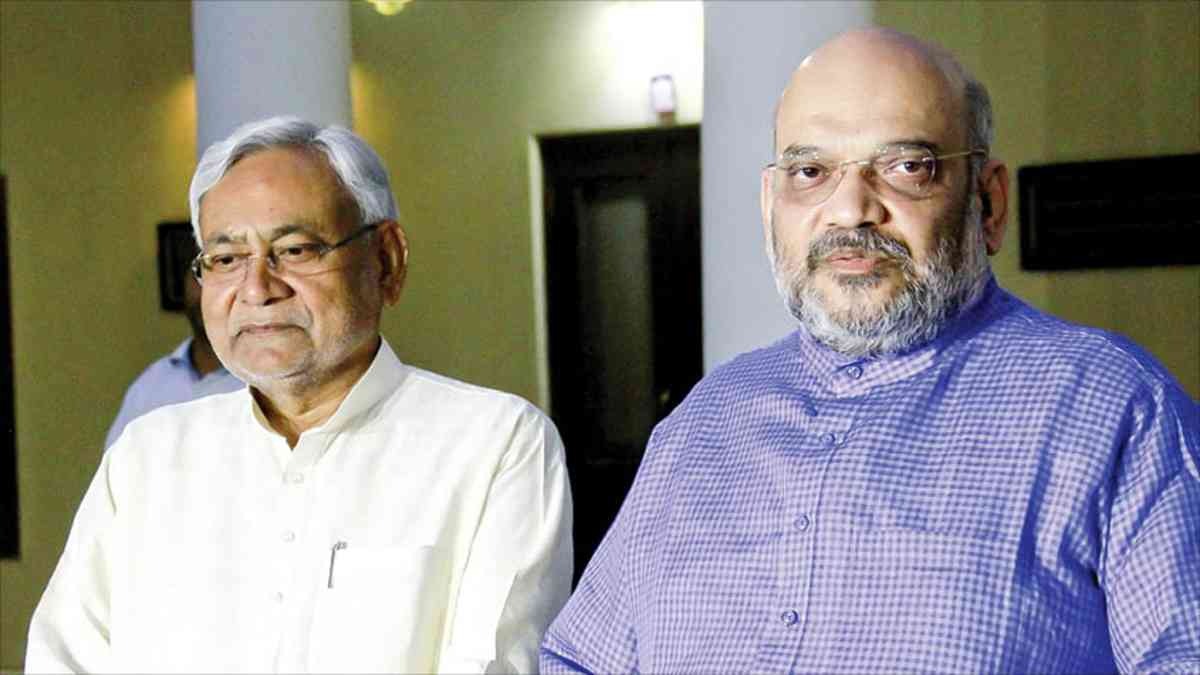
By Vikram Kilpady
Possibly the first state government to fall after the ascendance of the Modi-fied BJP without that party’s hand in the machinations has just shaken up the political landscape in Bihar, and the country. Nitish Kumar has pulled the rug from under the feet of the party. But since history has seen several turns first as a tragedy then as a farce, as noted by Hegel and Marx, Nitish Kumar possibly has the last laugh since he’s done the tragedy-farce duo twice. First, with the Rashtriya Janata Dal and, now, with the BJP, which among its many leaders has one man who gets called Chanakya way too often.
Once the party with a difference, the BJP has mastered the game of overturning elected governments; Madhya Pradesh where a maharajah switched to his aunt’s party, twice in Goa where elected Congress MLAs found faith in a new boss, Maharashtra where the cadre-strong Shiv Sena was ripped apart by a minister’s ambition, Karnataka where Operation Lotus blossomed first and spread its petals across the country.
Soon after the Modi magic of 2014, the dispirited opposition found new hope in the victory of Nitish Kumar and Lalu Yadav in the Bihar elections of 2015. But that was short-lived, Nitish found himself stifled by the ambition of Tejashwi Yadav and changed his mind, walking back to the BJP, which was eager to support him.
The 2020 election had the writing on the wall written in a more legible hand. The BJP won 74 seats, just one short of the party with the most seats, the RJD, which won 75. Nitish Kumar came third with 43 seats. The BJP was gaining at the cost of the Janata Dal United, which beat down Chirag Paswan’s rhetoric but couldn’t manage enough MLAs. The national party cannibalised its partner several times over throughout their association. The symbiosis of the initial years under Vajpayee was becoming a brain and brawn drain for the JDU. The election results were not free from controversy though, with the RJD alleging ballot boxes were changed in the middle of the night. The elections may have been won by the BJP and Nitish Kumar, helped by the image of Prime Minister Narendra Modi, but politics is not just platitudes, it also involves dirty work.
The use of RCP Singh by the BJP pointed at the potential of a Shiv Sena redux in the JDU, prompting the old fox to return to familiar Janata buddies, though once stabbed and all. But what is politics without the choosing of strange bedfellows, even if it borders on promiscuity and worse.
Read Also: Bihar BJP accuses Nitish Kumar of betraying Bihar people
The other angle to see the Bihar turn is from the lens of national politics. The idea of a country rid of the primary opposition party, aka becoming Congressmukt Bharat, has gained popular acceptance among the many for whom democracy is just voting in a new government. The turning of the Congress from its trademark white kurta to black attire was seen as a gimmick by the mainstream media. Far from a gimmick, the party was using what it encountered in Tamil Nadu where it rides on an ally’s stronger connect. The DMK’s parent, the Dravidar Kazhagam and its offshoots, still wears black shirts in protest against the idea of a homogenous India smearing over the vast differences between the country’s many constituents. With Hindutva becoming that all-unifying glue being applied by the BJP across the length and breadth of India, the Congress’s choice of black shows a new savvy.
Covid may have eclipsed the economy but many other slights and the worsening employment situation have India on uneven terrain. The Centre has to hold, but with accountability of successive state governments now enveloped buried in the image of the much-sought-after Strongman, an image that papered over the stark inadequacies of his administration, and won him and his party elections handsomely. The country was wearily dragging its battered economic self for another election some two years away. Nitish Kumar’s somersault has brought realpolitik back into the mix but investing all hope in serial side-switchers can be harmful for one’s emotions and well-being.
To be a rock for the Opposition, Nitish Kumar should not roll. But can old dogs learn new tricks?
Nitish Kumar stakes claim to form new Mahagathbandhan government in Bihar
Bihar Chief Minister Nitish Kumar resigns
India News
Yearender 2021: When hate uncovered its face
Instead of protecting victims of such incidents, the perpetrators not only enjoy immunity from the law, but also the administration in BJP-ruled states punishes victims. The use of false cases and arrests under draconian laws like UAPA are the preferred weapons.
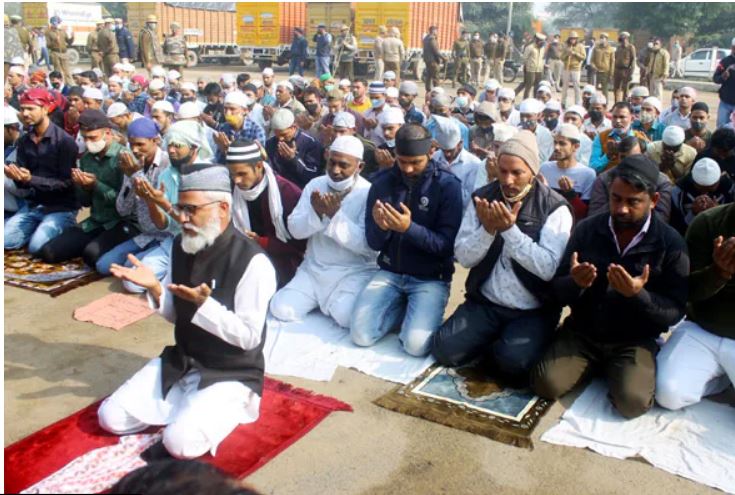
By Mohammad Javed Rasheedi
2021 is about to melt into 2022 in less than 48 hours. Majoritarian politics continued to hold its way over the country this year. But this year, it was not just Muslims but also Christians who felt the heat of Hindutva attacks across India as right-wing Hindu groups waged a culture war against them. Several churches have been attacked and statues of Jesus broken, the latest being in Ambala’s Army Cantonment, the scene of many a Rudyard Kipling work.
December saw targeted hate speeches against minorities. The one at Haridwar saw many participants vow to even take up weapons to redeem their faith by killing non-Hindus. The Hindu right-wing has waged war against Christians accusing them of religious conversion through their missionary work and Muslims for Love Jihad, an Islamophobic trope singling out Muslim men for falling in love with Hindu women and then converting them into Islam. However, such allegations targeting minorities have become a cornerstone of Hindu right-wing nationalism.
The Association for the Protection of Civil Rights, United Against Hate, and United Christian Forum jointly released a fact-finding report highlighting the series of attacks on churches and hate speech against Christians across India. According to the report, India has recorded more than 300 attacks on Christians and worship places within the first nine months of 2021.
Of the 305 incidents, 66 took place in Uttar Pradesh, 47 in Chhattisgarh and at least 32 in Karnataka.
While another report of the United Christian Forum had claimed that India reported more than 400 incidents of violence against Christians across the country. Among those, the incident involved storming churches, burning Christian literature, attacking schools and assaulting worshipers.
However, it is shocking that only 30 FIRs have been registered so far in these cases. On many occasions, restrictions were imposed on people to carry out religious ceremonies.
First on the list of attacks is the one on October 3, where a mob of 250-300 persons barged into a Roorkee church in Uttarakhand and attacked people, destroyed CCTV cameras, and vandalized church premises. Many reports said there were only 12 inside the church for prayers when the attack took place.
Apart from this, the attacks on churches were also reported from BJP-ruled states Haryana, Uttar Pradesh, Madhya Pradesh and Karnataka. And these attacks have taken place over allegations of religious conversion. Christians prayers meetings have also been stopped by the same Hindu mob who had stopped Jumma namaz in the so-called Millennium City, Gurugram. The city also saw an attack on a school’s Christmas celebration.
In the last week of 2021, the bank accounts of Mother Teresa’s Missionaries of Charity were frozen over FCRA claims, West Bengal Chief Minister Mamata Banerjee tweeted about the heartlessness behind the move affecting the charity of the outfit.
Some 22,000 patients and employees have been left without food and medicines, the West Bengal Chief Minister had tweeted.
The Missionaries of Charity was founded in 1950 by the late Mother Teresa, a Catholic nun from Macedonia, who moved to India and took care of the destitute and the poor and won the Nobel Peace Prize in 1979 for her work.
Hate speeches have been curtailed by some norms, keeping them among friends and family. The last week of 2021 saw more public hate speeches in the country. The controversial Dharam Sansad organized in Haridwar, other such events in Delhi and Chattisgarh saw where priests and leaders taking an oath to kill Muslims, and even urged Hindus to arm themselves against the Muslims to make India a Hindu Rashtra.
With next year’s assembly elections in Uttar Pradesh, Uttarakhand, Punjab, Goa and Manipur due shortly, the increase in such hate is an attempt at reviving polarisation.
The violence in Tripura, where VHP hoodlums attacked Muslims and vandalized some of their mosques and Friday prayers disruptions at designated places at Gurugram were also the prime example of rising hate against Muslims.
Anti-Hindu violence in parts of Bangladesh triggered violence in Tripura. The communal riots erupted on October 26 after a rally organized by the Vishwa Hindu Parishad to protest against the attacks on Hindus in Bangladesh turned violent.
The VHP and the Hindu Jagran Manch organized rallies in different parts of the state to protest against the violence in Bangladesh. Later, the VHP and other right-wing groups denied any role in the violence.
The anti-Hindu violence in Bangladesh, which erupted during the Durga Puja festival, was triggered by rumours that the Quran had been insulted in one of the pavilions set up for the celebrations. Seven people were killed, several temples desecrated, and hundreds of houses and business establishments of the Hindu minority were torched.
However, many Muslim groups alleged political conspiracy claiming that the minorities were being targeted in the north eastern state. There were many arrests and some journalists covering the riots in Tripura were also detained. Those who tweeted in favour of Tripura’s Muslims also found themselves being served notices by the state police.
The Uttar Pradesh government had faced severe criticism from the opposition over the killings of Kasganj youth Altaaf in mysterious circumstance. He had been arrested on suspicion of eloping with a Hindu woman. Again, the smoldering love jihad theory. The law and order in Uttar Pradesh, which had earlier won so much praise from PM Modi and other BJP leaders, has been roundly criticized by opposition parties in Uttar Pradesh.
The family of the deceased had alleged that he was tortured by police in the lockup, which led to his death. Police claimed the accused killed himself using the drawstring of his jacket’s hood when he went to the lockup washroom.
Apart from mob lynching, Muslim street vendors in Ahmedabad and some parts of Madhya Pradesh and other parts of the country have been threatened and disallowed from pursuing their livelihood. In Ahmedabad, the Hujarat High Court stepped in to tell off the civic authority to desist from such measures. In Assam, poor peasant families cultivating land for decades were brutally evicted only because they belonged to the Muslim minority. The point-blank shooting of Moinal Haque by police personnel caught on video and the subsequent death dance by a photographer with the remains indeed were a mirror for the crumbling facade of secular India, now overtaken by an aggressive mindless herd mentality spewing hate and violence.
Read Also: Masik Shivratri 2022: Know date, shubh muhurat, puja vidhi, significance
An empty desolate car park outside Sector 37 police station in Gurugram where Muslims had performed Friday prayers for more than a decade turned into a battleground of faith. Hindu right-wing groups staged protests, sloganeered during Friday prayers and held a Govardhan puja at the namaz site just to deny namaz here.
Instead of protecting victims of such incidents, the perpetrators not only enjoy immunity from the law, but also the administration in BJP-ruled states punishes victims. The use of false cases and arrests under draconian laws like UAPA are the preferred weapons.
Haryana news
Dushyant Chautala stood up for farmer’s cause; opposition failed
The Indian farmer constitutes 40 per cent of the country and an even higher percentage of its poor and as the available data points out, is under immense stress.
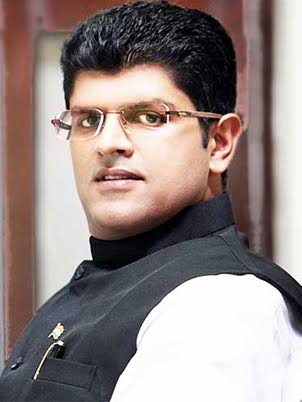
By Prateek Som
The Indian farmer constitutes 40 per cent of the country and an even higher percentage of its poor and as the available data points out, is under immense stress. The modernization of the central farm laws is nothing but an adaptation of provisions which already exist in many states, including Punjab and Haryana. How come the three acts become anti-farmer in some states and why not in many others is something the activists themselves cannot explain.
Big states like Uttar Pradesh, Bihar, Maharashtra, West Bengal, Rajasthan are not even a part of the farmers’ agitation and there is no protest against the central or state government in these states, despite the fact that BJP is not in power in some of these states. More importantly, some agriculturists and several economists have been campaigning for abolishing MSP based procurement as it is unfairly tilted towards a few states like Punjab.
The Central government has neither abolished the MSP nor does it say anything against it in the laws. If, despite this, the impression is being spread that MSP is to be abolished, this is clearly mischievous. The activists are not only spreading the misinformation about the MSP abolition but they are asking for an unreasonable clause in the law for unlimited MSP based procurement which was never a part of the previous laws related to agriculture and APMC acts.
The Indian farm bills are in line with international precedence wherein a number of developing economies have been making changes to their agriculture policies since the 1990s to encourage private sector involvement which would provide a major fillip to the sector. The International Monetary Fund has also backed the recent farm acts as being an important step in the right direction. Despite all the supportive arguments in the favour of the laws, India has seen unprecedented protest in and around the capital as a result of political vendetta.
Politics of Yogendra Yadav and Gurnam Chaduni and its irrelevance to the farmer’s cause
Raising the farmer’s issues should be an act done collectively but the state farmer activists are trying to establish a monopoly in the leadership. They are not even active in all the parts of the state, but targeting only those districts with paddy belt of cropping pattern. Most of them are politically motivated.
In an interview given to NDTV, Yogendra Yadav came out as an aspiring candidate for Haryana CM post and he was advertised as the most fit politician for the position. He formulated his own party, ‘Swaraj’, after being expelled from AAP and lost badly in polls. It is a proof that he lacks mass support. A report by Divya Bhaskar states that farmer leader Gurnam Chaduni was accused of teaming up with political parties like Congress, AAP, SAD and some independent leaders and getting into a deal worth Rs 10 crore to topple the Khattar government in Haryana in return of Congress ticket for elections. There are allegations that Chaduni is collecting funds out of the collection drive for protests and hiding the funds from other leaders. He was also blamed for instigating farmers to disrupt the January 26 celebrations at the Red Fort. Haryana CM Khattar held Chaduni responsible for instigating the farmers that led to clashes between farmers and police at Karnal just before the Kisan Mahapanchayat programme. As a result of his politically motivated efforts, Chaduni was suspended by Samyukt Kisan Morcha from meeting politicians across country. In the 2019 assembly elections, Chaduni contested from Ladwa as an Independent candidate, but suffered a heavy defeat, garnering only 1,307 votes and losing his deposit.
Yogendra Yadav and Gurnam Chaduni are mere examples of how election failures like themselves are trying to garner the support of the commoners for their own political resurrection. The claim of being a leader of the farmers is in contravention with the inconsiderable support both Yadav and Chaduni got in the polls. The Shiromani Akali Dal that left the NDA government in the pursuance of state elections and under the disguise of farmer’s demands has made zero impact on the political ground of Punjab. Their biases can not only be seen from their actions but their cause and concern for two states out of 28. The threat posed by leaders like these to the democratic process of passing of a bill can be seen through the factual analysis of what the laws actually say versus the intentional misconceptions spread by such leaders.
Since an unlimited MSP based procurement is not in the law even today, it is not clear how this is even an issue. More importantly, putting this in the law means India will get tied to distortions that MSP based prices cause in perpetuity. The government has made it clear that procurement at MSP will continue and also that the mandis will not stop functioning. Farmers will have the option to sell their produce at other places in addition to the mandis. It is worth noting that only 6% of farmers actually sell their crops at MSP rates, according to the 2015 Shanta Kumar Committee’s report using National Sample Survey data. There are fears that contract farming will lead to land loss of the small and marginal farmers to big corporates. However, adequate protection of land ownership is in place to protect farmer interests. The act explicitly prohibits any sponsor firm from acquiring the land of farmers – whether through purchase, lease or mortgage. The point to note is that contract cultivation is voluntary in nature and farmers cannot be forced into an agreement.
How Dushyant Chautala is taking initiatives for farmers
Dushyant Chautala is the only state leader who has met Central leaders regarding the farmer demands – Prime Minister, Home Minister, Agriculture Minister along with other cabinet ministers Nitin Gadkari and Piyush Goyal. No other leader in India has met them specifically for farmers’ demands. That shows the concern and responsibility on the part of the JJP leader who is a leader of the masses.
In April 2020, Deputy CM Chautala addressed that the state government will procure the crops of the farmers in a better way while saving the state from the corona epidemic. As a result of this, even in the pandemic situation, mandis have been increased to 162 from 67 for the purchase of mustard at MSP. Haryana is the only state across the country which has started procurement of mustard crop in this pandemic. In November 2020, Dushyant assured the farmers that government will buy every grain of the crop. He made procurements for non-MSP crops to get the rate of MSP crops. He also announced formation of women Self-Help Groups in all villages on the lines of successful initiative in Hisar, to increase employment opportunities for women and showcase their talent at international level.
In February 2021, Dushyant made the announcement to buy 6 crops including wheat, mustard, pulses, sunflower, gram at MSP, barley is included for the first time. Haryana is the first state to offer MSP for barley. Every farmer is to be registered on the ‘Meri Fasal Mera Byora’ portal at MSP and payment amount will arrive in the farmer’s account within 48 hours. Along with recent announcements, the schemes like Mukhyamantri Parivar Samman Nidhi Scheme, Haryana Agricultural Machinary Grant Scheme, Pragatishil Kisan Samman Yojana, Pragatishil Kisan Trainer and Kisan Mitra Scheme to promote the inclusive growth of farmers in Haryana.
The main agenda of ongoing agitations
Amidst all the chaos, the agitations by activists like Yogendra Yadav and Gurnam Chaduni are for targeting Deputy CM Dushyant Chautala. It is a matter of record that many times they carried protests outside his residence and their intention and cause are suspicious to the core as they did not target any other leader in power like this.
The agitations in Haryana are mainly against the JJP and specifically targeted towards the leadership of Deputy CM Dushyant Chautala. The attempts of the farmer leaders to make Dushyant Chautala resign from the government are nothing but petty politics to destabilize the state government. If the threat to farmers is real, why the cause of the farmers is not taken up by the farmers from masses than some farmers from selected areas and that too under the leadership of politically motivated specific leaders only who have ties with the parties who are eyeing the upcoming elections?
The high-pitched farmer agitation is not just based on incorrect perceptions of what the new farm laws will result in – the abolition of APMC mandis and MSP-based procurement – they are also not about protecting the farmer in the long run. The agitation is purely an attempt to corner the stable functioning state government, to boost the sagging political fortunes of the activist leaders by deliberately misleading farmers, to run a personal vendetta against a young and dynamic leadership of Dushyant Chautala who is making efforts for the farmers and to give chance to Congress to come in power. That is why, before the activists decided to fuel the agitation, they focused on batting for spreading misinformation, have nothing to say about non-MSP crops/livestock in the state and have no future agenda for the inclusive growth and development of farmers. And to make the matters worse, they are trying to provoke the masses against the people in power for their vested political interests.
The author is an Advocate in Supreme Court of India and National Spokesperson of Jannayak Janta Party
-
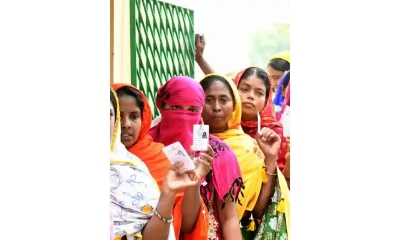
 2024 Lok Sabha Elections11 hours ago
2024 Lok Sabha Elections11 hours agoPrime Minister Narendra Modi urges citizens to vote in record numbers as voting for first phase of Lok Sabha elections begins on 102 seats across India
-
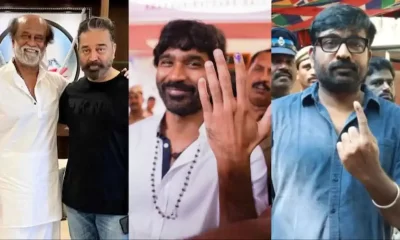
 2024 Lok Sabha Elections9 hours ago
2024 Lok Sabha Elections9 hours agoKamal Haasan, Rajinikanth, Vijay Sethupathi, Dhanush vote in Chennai
-

 2024 Lok Sabha Elections10 hours ago
2024 Lok Sabha Elections10 hours agoLok Sabha elections 2024: Google Doodle marks the start of polls with index finger voting symbol
-

 2024 Lok Sabha Elections9 hours ago
2024 Lok Sabha Elections9 hours agoLok Sabha elections 2024: TMC, BJP workers clash in West Bengal’s Cooh Behar ahead of voting
-

 2024 Lok Sabha Elections8 hours ago
2024 Lok Sabha Elections8 hours agoLok Sabha elections 2024: Newly married couple cast vote in Jammu and Kashmir’s Udhampur, video goes viral
-

 Entertainment6 hours ago
Entertainment6 hours agoDo Aur Do Pyaar social media review: Social media users say Vidya Balan, Pratik Gandhi deliver standout performances in this adorable film
-
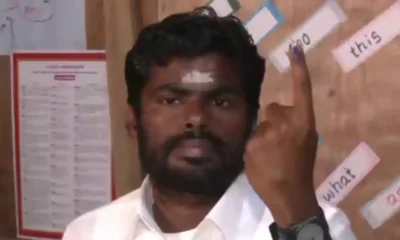
 2024 Lok Sabha Elections8 hours ago
2024 Lok Sabha Elections8 hours agoTamil Nadu BJP chief K Annamalai says party will sweep Karnataka and emerge victorious in Telangana, accuses DMK, AIADMK of influencing voters in Coimbatore
-

 Entertainment8 hours ago
Entertainment8 hours agoYami Gautam starrer Article 370 releases on Netflix today

